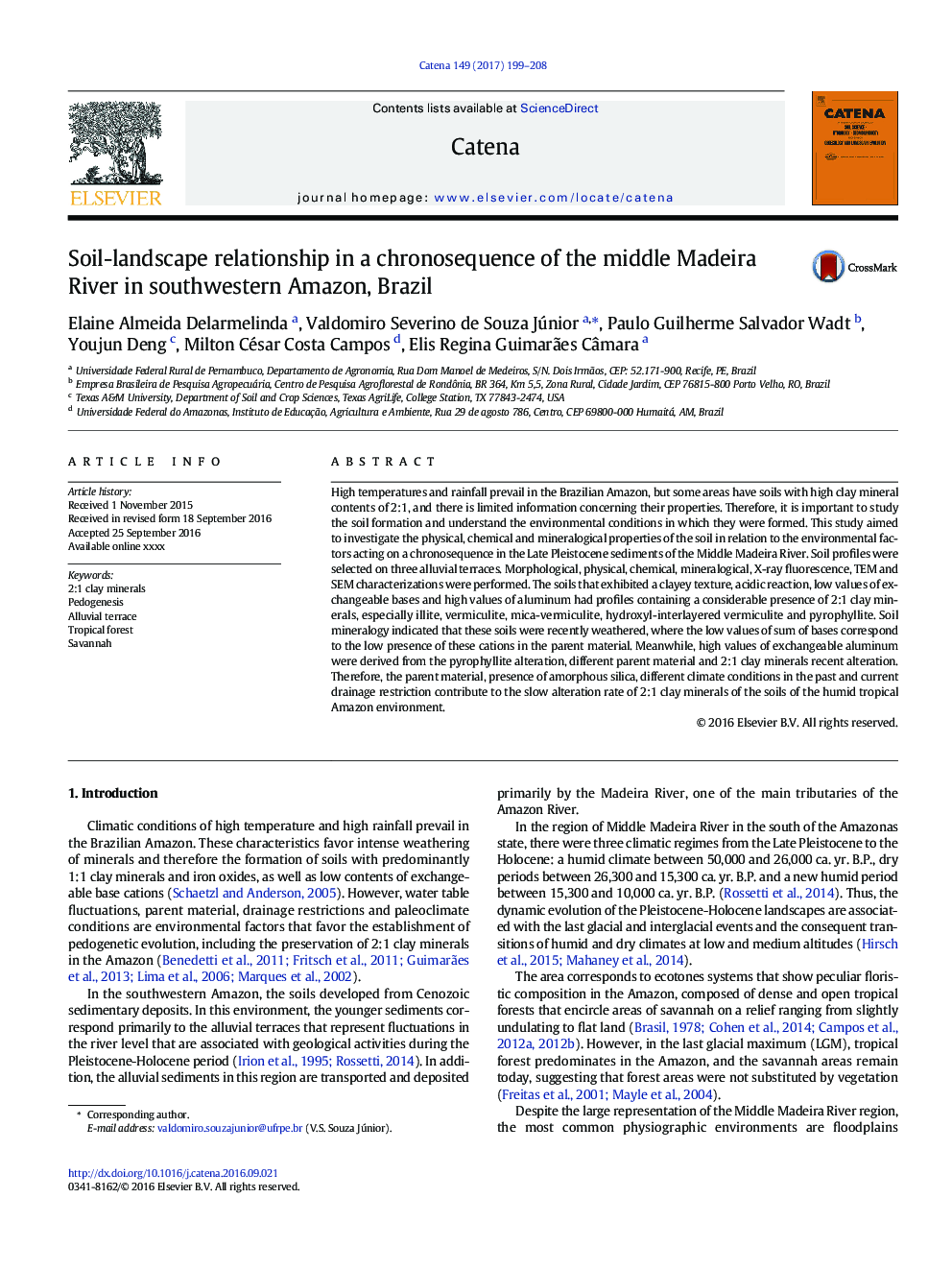| Article ID | Journal | Published Year | Pages | File Type |
|---|---|---|---|---|
| 10997827 | CATENA | 2017 | 10 Pages |
Abstract
High temperatures and rainfall prevail in the Brazilian Amazon, but some areas have soils with high clay mineral contents of 2:1, and there is limited information concerning their properties. Therefore, it is important to study the soil formation and understand the environmental conditions in which they were formed. This study aimed to investigate the physical, chemical and mineralogical properties of the soil in relation to the environmental factors acting on a chronosequence in the Late Pleistocene sediments of the Middle Madeira River. Soil profiles were selected on three alluvial terraces. Morphological, physical, chemical, mineralogical, X-ray fluorescence, TEM and SEM characterizations were performed. The soils that exhibited a clayey texture, acidic reaction, low values of exchangeable bases and high values of aluminum had profiles containing a considerable presence of 2:1 clay minerals, especially illite, vermiculite, mica-vermiculite, hydroxyl-interlayered vermiculite and pyrophyllite. Soil mineralogy indicated that these soils were recently weathered, where the low values of sum of bases correspond to the low presence of these cations in the parent material. Meanwhile, high values of exchangeable aluminum were derived from the pyrophyllite alteration, different parent material and 2:1 clay minerals recent alteration. Therefore, the parent material, presence of amorphous silica, different climate conditions in the past and current drainage restriction contribute to the slow alteration rate of 2:1 clay minerals of the soils of the humid tropical Amazon environment.
Related Topics
Physical Sciences and Engineering
Earth and Planetary Sciences
Earth-Surface Processes
Authors
Elaine Almeida Delarmelinda, Valdomiro Severino de Souza Júnior, Paulo Guilherme Salvador Wadt, Youjun Deng, Milton César Costa Campos, Elis Regina Guimarães Câmara,
